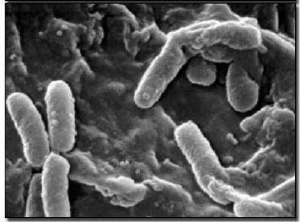Nov 19 2008
Researchers in New Mexico and Florida are reporting development of microscopic particles that act as chemical booby traps for bacteria. The traps attract and kill up to 95 percent of nearby bacteria, including microbes responsible for worrisome hospital-based infections. The scientists describe their discovery as micro-sized "roach motels" for harmful bacteria. Their study went online November 24 in the premiere issue of ACS Applied Materials + Interfaces, a new monthly journal. It is scheduled for the January 28 print edition.
 Researchers are reporting development of antibacterial microcapsules that attract, capture, and kill harmful bacteria. Credit: Queensland Government
Researchers are reporting development of antibacterial microcapsules that attract, capture, and kill harmful bacteria. Credit: Queensland Government
In the report, David G. Whitten of the University of New Mexico and Kirk S. Schanze of the University of Florida, working together with a team of faculty and graduate student collaborators, point out that bacterial contamination of medical devices causes up to 1.4 million deaths per year. In addition, bacteria are becoming more resistant to standard disinfection methods. Scientists also are increasingly concerned about the possibility of intentional release of harmful bacteria by terrorists. As a result, researchers are attempting to develop new and improved methods of disinfection.
The New Mexico and Florida groups describe an advance toward this goal. It involves the development of light-activated, hollow microcapsules composed of an organic conducting polymer. The antibacterial microcapsules can attract, capture, and kill bacteria. In controlled laboratory tests, the researchers exposed the capsules to either Pseudomonas aeruginosa, one of the deadliest and most common hospital-based pathogens, or Cobetia marina, a type of bacterium that fouls the hulls of ships and other marine equipment. After one hour of light exposure, the light-activated capsules killed more than 95 percent of the exposed bacteria, the researchers say. The microcapsules can be applied to a variety of surfaces, including medical equipment, they add. — MTS